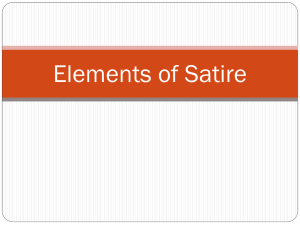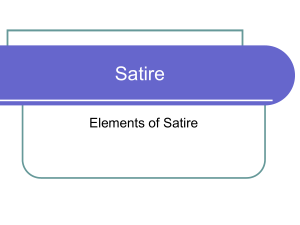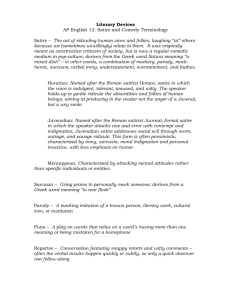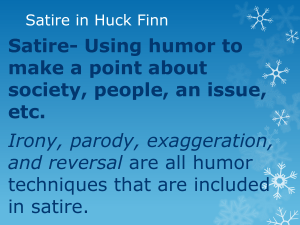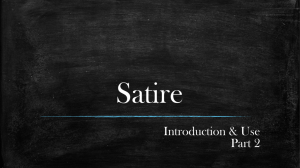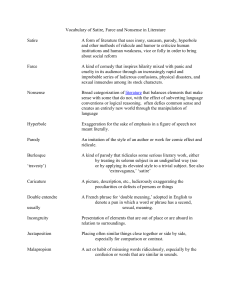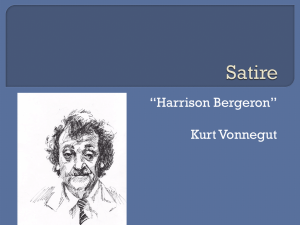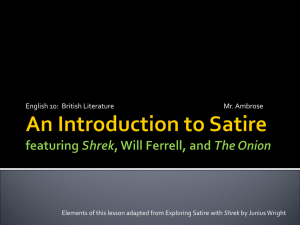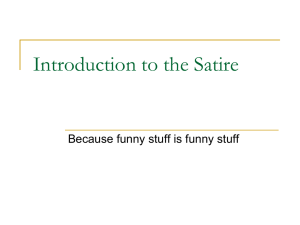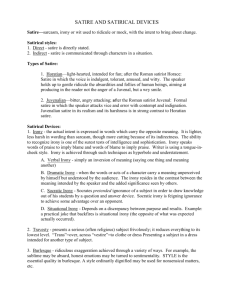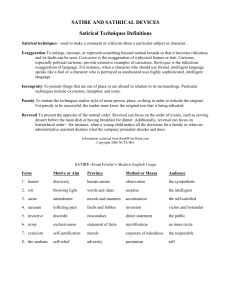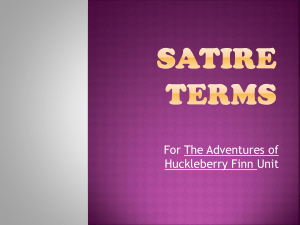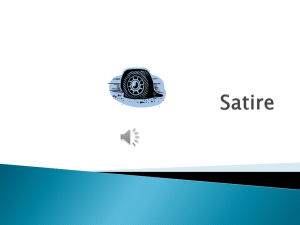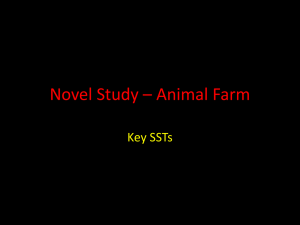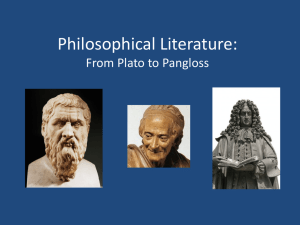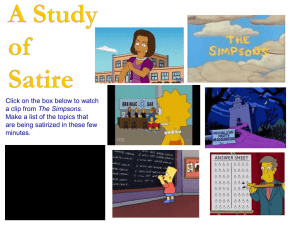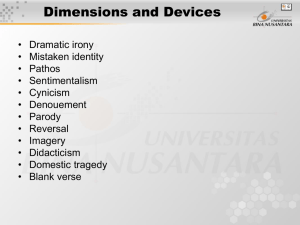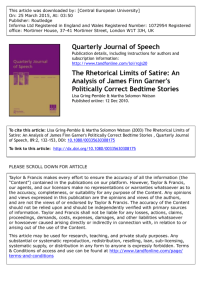Satire Notes
advertisement
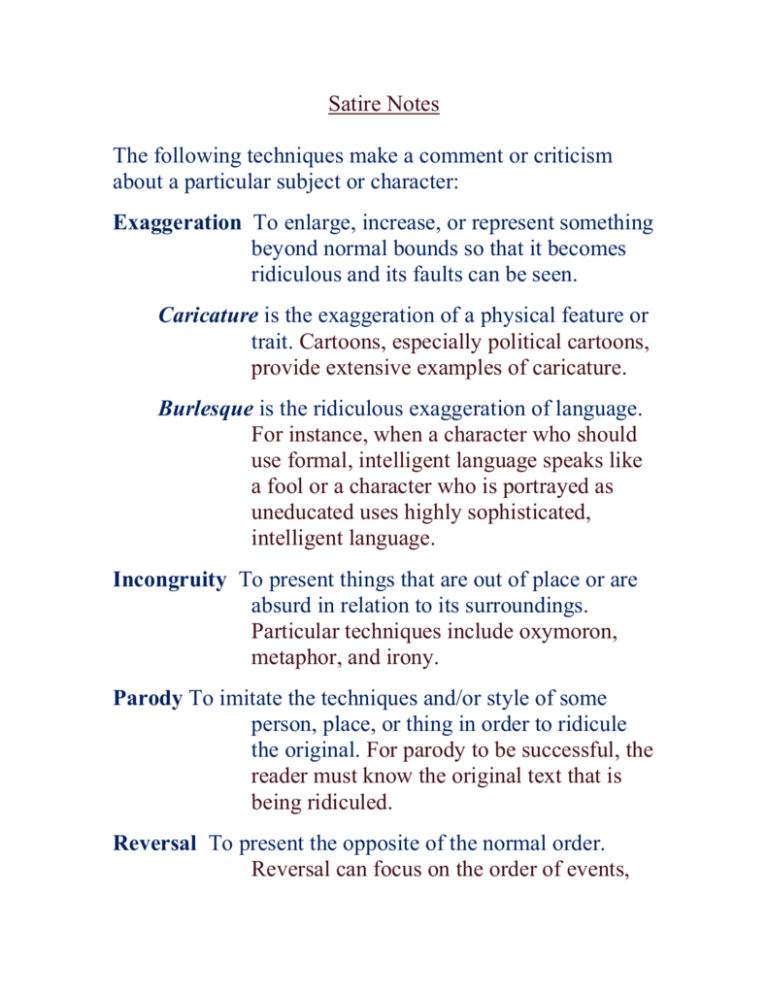
Satire Notes The following techniques make a comment or criticism about a particular subject or character: Exaggeration To enlarge, increase, or represent something beyond normal bounds so that it becomes ridiculous and its faults can be seen. Caricature is the exaggeration of a physical feature or trait. Cartoons, especially political cartoons, provide extensive examples of caricature. Burlesque is the ridiculous exaggeration of language. For instance, when a character who should use formal, intelligent language speaks like a fool or a character who is portrayed as uneducated uses highly sophisticated, intelligent language. Incongruity To present things that are out of place or are absurd in relation to its surroundings. Particular techniques include oxymoron, metaphor, and irony. Parody To imitate the techniques and/or style of some person, place, or thing in order to ridicule the original. For parody to be successful, the reader must know the original text that is being ridiculed. Reversal To present the opposite of the normal order. Reversal can focus on the order of events, such as serving dessert before the main dish or having breakfast for dinner. Additionally, reversal can focus on hierarchical order— for instance, when a young child makes all the decisions for a family or when an administrative assistant dictates what the company president decides and does. http://www.youtube.com/watch?v=PuvjDK3mpA0 https://www.youtube.com/watch?v=DX1iplQQJTo The Simpsons Opening Satire Satire is the literary art of making a subject ridiculous by arousing towards it feelings of contempt, amusement, and scorn. While humor has the evocation of amusement as its sole end, satire often employs the comic to the end of pointing up human faults and effecting some improvement in humanity or human institutions. The butt of satire may be an individual, a type of person, a particular social evil (as in Swift's A Modest Proposal), or even the entire race of mankind. The most frequently used satirical techniques are irony, sarcasm, burlesque, and parody. Irony is a technique in which the attitudes stated differ from what is really meant. For example, words of praise can be used to imply blame. A Modest Proposal is one of the most effective and savage examples of sustained ironic tone in English literature. Sarcasm is more caustic, crude, and heavy-handed than irony, of which it is a form. Sarcasm also tends to be more personally directed than irony. Burlesque is an imitation of a person or subject which, by ridiculous exaggeration or distortion, aims to amuse. The quality which characterizes this technique is a discrepancy between the subject matter and the style in which it is treated. For example, a frivolous subject may be treated with mock dignity, or conversely, a weighty subject might be handled in a trivial style. Parody differs from burlesque in that it derides not a person or subject, but a specific literary work or style, by imitating features and applying them to trivial or incongruous materials. http://quizlet.com/18869172/satirical-devices-and-satirical-techniques-for-english-examflash-cards/ FOR GRADE 9 TERMS
